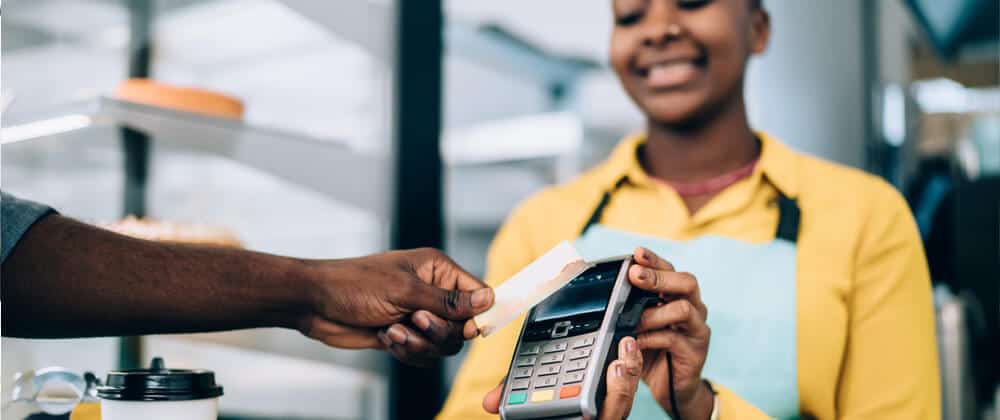Going contactless is suddenly in vogue. From elbow bumps to video conferencing to food delivery, the COVID-19 pandemic has changed how society views close contact. The payments industry is no exception.
Contactless payment use is expected to surge, analysts predict, because of the reputation paper bills have for being dirty and because passing and swiping credit cards can cause unnecessary contact at points of sale.
Contactless payments include tap-and-go credit and debit cards that allow a user to hold their card next to a reader to pay without entering a pin or providing a signature. The technology, which works similarly to mobile wallets, is more popular in some parts of the world than in others.
For example, Europe, Canada and many parts of Asia Pacific have broad adoption of contactless payments while the United States has been slow to switch, as retailers and consumers still rely heavily on cards with embedded contact payment chips or magnetic stripes as well as the greenback U.S. dollar — cash.
But now cash is coming under fire as a possible coronavirus transmitter, according to a research note by Jordan McKee, Research Director for Customer Experience and Commerce at 451 Research.
And although there have been conflicting reports about whether or not currencies can actually transmit COVID-19, governments and consumers are embracing contactless payment methods.
The United Kingdom recently announced an increase in their maximum amount per transaction allowed for contactless cards from £30 ($35) to £45 ($52). Authorities have raised similar limits in 29 European countries due to the pandemic. The contactless limit in the U.S. is typically $100 per transaction.
The trend to use contactless looks like it might stick around. RTi Research conducted a consumer survey from March 20 to 23 that found 30 percent of respondents have started using contactless payment methods since the COVID-19 outbreak started, according to a story in Payments Journal. Of those new users, 70 percent expect they will continue to use the method after the pandemic ends, the report said.
Besides reducing touchpoints, the switch to contactless also has the benefit of speeding up transactions, according to a report on COVID-19 and the financial services sector by Aite Group. “The lack of friction and physical contact in digital payments not only accelerates commerce, but also keeps the economy moving at a time of crisis,” Aite said.
“At Entrust, we continue to introduce new solutions for personalizing, packaging and delivering debit and credit cards to consumers, including contactless cards,” said Dan Good, Vice President, Bureau Solutions. “As card issuers assess their portfolios, we expect more of them to turn to contactless technology – and we’re ready with the solutions to meet that demand.”
Learn how Entrust can help you with your payment needs.



